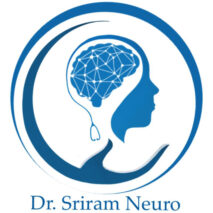
Spine Pain: Causes, Red Flags, Diagnosis & Treatment
Spine pain is a common issue that affects many people worldwide. It’s the second most frequent symptom in neurology, next only to headaches.
In fact, low back pain is the leading cause of disability globally, with projections indicating that by 2050, over 800 million people will experience it, according to a projection by Lancet. It is estimated that approximately 70% of individuals will encounter low back pain at some point in their lives.
Back pain is a common and prevalent issue affecting many individuals worldwide. In this article, we aim to provide a better understanding of back pain, drawing on the expertise of Dr. A. Santosh Sriram, one of the best spine specialists in Hyderabad.
What Causes Spine Pain?
Spine pain can arise from various factors such as :
- Ligament Strain: Overstretching or tearing muscles and ligaments in the back, often due to heavy lifting or sudden movements.
- Herniated Discs: When the soft cushions between the vertebrae (discs) slip out of place, they can press on nerves, causing pain.
- Arthritis: Inflammation of the joints in the spine can lead to pain and stiffness.
- Osteoporosis: A condition where bones become weak and brittle, increasing the risk of fractures.
- Osteoarthritis: The most common type of arthritis, osteoarthritis involves the degeneration of joint cartilage and underlying bone, leading to pain and stiffness in the back.
- Scoliosis: An abnormal lateral curvature of the spine, scoliosis can cause uneven pressure on the back muscles and ligaments, resulting in pain.
- Spondylolisthesis: This condition occurs when one vertebra slips over the one below it, potentially compressing nerves and causing pain.
- Sprains: Injuries to ligaments, the tissues connecting bones in a joint, can result from overstretching or tearing, leading to back pain.
- Ankylosing Spondylitis (AS): It is a chronic inflammatory arthritis that is known to affect the spine and sacroiliac joints, leading to pain and stiffness in the lower back and hips.
- Sacroiliitis: This condition involves inflammation of the sacroiliac joints, where the lower spine meets the pelvis.
- Spinal stenosis: In Spinal stenosis, there is narrowing of spaces within the spine, leading to increased pressure on the spinal cord and nerve roots leading to compressions. They can cause symptoms like pain, numbness, or weakness in the arms or legs.
Red Flags: When to Seek Medical Attention
While many cases of back pain improve with rest and self-care, certain signs—known as “red flags”—indicate the need for medical evaluation:
- Loss of Bowel or Bladder Control: Difficulty controlling urination or defecation.
- Severe or Unrelenting Pain: Pain that doesn’t improve with rest or over-the-counter medications.
- Numbness or Weakness: Loss of feeling or strength in the legs.
- History of Cancer: A past history of cancer, especially if back pain is new or different.
- Age Considerations: Back pain in individuals under 18 or over 50 years old may be a red flag.
- Marked hyperreflexia or pathologic reflexes
- Structural deformity
- Marked hyperreflexia or pathologic reflexes
Imaging and Evaluation
If you experience any of the red flags mentioned above, it’s essential to consult a neurologist. They may perform:
- Physical Examination: Assessing your back’s range of motion and checking for areas of tenderness.
- Imaging Tests: Techniques like X-rays, MRI, or CT scans can help identify structural issues.
- Electromyography (EMG): It is a diagnostic technique that records electrical signals during muscle contraction and relaxation. This test helps identify nerve dysfunction, muscle disorders, or issues with nerve-to-muscle signal transmission.
However, in the absence of red flags, spine imaging is typically not warranted if pain is present for less than 6 weeks with no prior history of attempted treatment. Clinical guidelines recommend against imaging for low back pain within the first six weeks, unless red flags are present.
Treatment Options
Treatment depends on the cause of the pain:
- Physical Therapy: Exercises to strengthen back muscles and improve flexibility.
- Medications: Steroids, pain relievers or anti-inflammatory drugs to reduce discomfort.
- Lifestyle Modifications: Maintaining a healthy weight, practicing good posture, and engaging in regular physical activity.
- Surgical Intervention: In most cases, surgery is considered only when non-surgical treatments have failed for back pain.
If you’re experiencing persistent or severe back pain, consider consulting Dr. A. Santosh Sriram, noted spine specialist doctor in Hyderabad and one of the best neuro doctors for spine pain in Hyderabad. He specializes in diagnosing and treating various neurological disorders, including back pain.
